




WHAT SHOULD A TEACHER LOOK LIKE?


























In today’s global world, we’re now more connected than ever. Sometimes, however, that same interconnectivity can reveal increasing divisions in our society. Much remains to be done to face the tide of intolerance and discrimination that seems to be rising, and we hope our March/April issue can inspire both a path forward and a counter to those attitudes. Here, we share some celebrations of diversity and inclusivity, while exploring ways that these concepts can continue to be brought into our schools.
Social studies teacher David Allyn has found one such method, while simultaneously tackling controversial topics and social justice issues in his classroom. Best of all, his project-based approach to teaching history and civics gives students the chance to research material that is meaningful and relevant to them. Each semester, Allyn has his students work together in teams to create a website and podcast based on a specific theme. Last year’s theme was “A real or perceived threat to liberal democracy” and included heavy-hitting subtopics like voter fraud, anti-Black racism and anti-LGBTQ+ rhetoric, and book bans.
As the issue of book banning becomes more pervasive throughout both Canada and the United States, how can educators ensure that students continue to have access to stories that reflect the diversity of the world around them? Writer Fiona Tapp shows one way to counter the censoring of books is through book clubs. Not only do these clubs celebrate a multitude of perspectives, they also offer platforms for critical thinking and can even serve as catalysts for social change. In her article, Tapp looks at one club in particular called A Room of Your Own that is geared towards highrisk teen girls, trans, and non-binary students across North America. The club not only provides a safe space for its members to express their curiosity, it also empowers them to be their best, most confident selves.
Elementary educator Rabia Khokhar recognizes the power books can hold as well. Growing up, she desperately wanted
to be a teacher, but never saw other educators who shared aspects of her identity in real life or in books she read. This lack of representation didn’t stop her from achieving her dream, but it did make the path more difficult. Today, Rabia is a proud champion of books that represent a multitude of cultures and identities, and she strongly believes in the importance of young people seeing themselves reflected in various roles in society. Take a look at her article, where she tells her own story and shares some great book recommendations as well.
If you are looking for even more books that celebrate diversity, check out this issue’s Bookstuff, which features a wide selection of stories about Ramadan, along with Muslim characters who embody the values of this holy month. This year, Ramadan is observed from March 10 to April 8, and since it is already underway, now is the perfect time to add these books to your classroom or library.
For many parts of North America, the months of March and April are still plagued by cold and dreary days. Although spring is certainly on its way, by now you may be running out of indoor activities to occupy your students as you wait for the warmer weather to arrive. Luckily, our Field Trips column is here to provide some much-needed inspiration. You won’t want to miss this one!
Lastly, this issue’s Curricula demonstrates how books can be used to showcase concepts of diversity and inclusion to primary students. The lesson plan is based on the First Peoples Principles of Learning, a set of learning approaches specific to First Nations communities. Several of these principles include: “Learning requires exploration of one’s identity” and “Learning is embedded in memory, history, and story,” among many others. To that end, we hope the stories we have shared and identities we have celebrated in this issue will contribute to learning for both yourself and your students.
See you next time.
KELSEY MCCALLUM ASSOCIATE EDITOR14
04 06
FEATURE
Fostering Inclusivity and Empathy: The Crucial Role of Book Clubs
Fiona Tapp
COLUMNS
Bookstuff
Celebrating Ramadan
Classroom Perspectives
More than Just Chit-Chat: Teaching Social Studies with Podcasts
David Allyn
10 Field Trips Gymnastics
17
22
18
Teacher’s Pet
Classroom Perspectives
What Should a Teacher Look Like?
Rabia Khokhar
CURRICULA
Indigenous Voices: Facets of Courage
Monica Berra
AD INDEX



ASSISTANT EDITOR
Nupur Bagoria
CONTRIBUTORS
David Allyn
Monica Berra
Rabia Khokhar
Fiona Tapp
ART DIRECTOR
Pauline Lopez
JUNIOR GRAPHIC DESIGNER
Amos Chin
EDITORIAL ADVISORY BOARD
Bernice Slotnick
Teacher (Retired)
John Myers
Curriculum Instructor, OISE (Retired)
Rose Dotten
CEO and Head Librarian, Shelburne Public Library
Ramadan is a month-long period of fasting, prayer, and reflection. It provides an opportunity to strengthen family and community ties while gaining self-discipline, empathy, and spiritual awareness. In line with this, we have compiled a list of new and upcoming books featuring Muslim characters who embody these values, and with the month of Ramadan already underway, now is a great time to add these to your classroom or library! We hope you and your students find them helpful and inspiring.
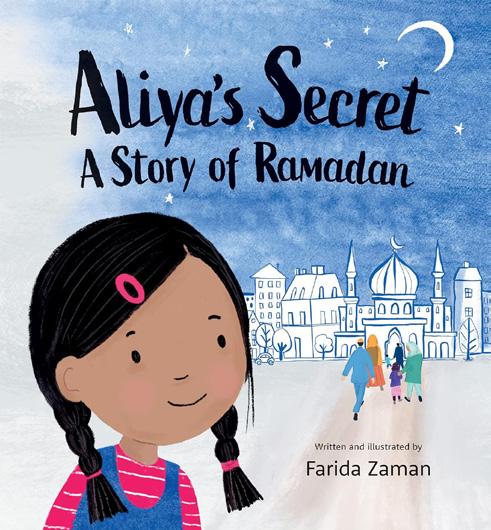

Orca Book Publishers (March 2024)
Grade Level: 4-7
Ali, a Pakistani immigrant, is an eighth-grader struggling to find his place in the world. As a way of dealing with expectations from his parents, social pressures, casual racism, and personal challenges, he turns to poetry to express his thoughts and emotions. In this poignant and socially relevant tale, readers will follow Ali’s growth throughout the Ramadan period as he learns to embrace his identity and find his true voice.
ZAMANOwlkids (October 2023)
Grade Level: K-2
Aliya’s parents are planning for their month-long fast during Ramadan and she wants to join them, but she’s too young. So Aliya takes it upon herself to fast in secret... which doesn’t last long! This heartwarming book is rich with facts about Ramadan festivities and reflects upon other ways to celebrate besides fasting, like performing acts of kindness.


Feiwel & Friends (June 2024)
Grade Level: 9-12
Tensions still linger between Said Hossain and his ex-best friend Tiwa Olatunji, but when their beloved Islamic Center catches fire just before the upcoming Eid celebration, Tiwa is forced to reach out to Said for help. Together, they must navigate their complicated past to rally the community and save what’s left of the centre from complete demolition. Will their efforts be enough to bring about a happy Eid celebration and rekindle their friendship—or maybe even turn it into something more?
1 ALIYA’S SECRET: A STORY OF RAMADAN BY FARIDA 2 3Quill Tree Books (February 2024)
Grade Level: 3-7
This intriguing novel follows the journey of contemporary Muslim American girl Mahnoor as she captures an unforgettable tale of loss, hope, and resilience. Her Dadi (grandmother) has recently moved from Pakistan to live with Mahnoor’s family, but Mahnoor doesn’t have time to help her get settled; she’s in the middle of working on a documentary for her journalism class. The only problem? She doesn’t have a subject. But the more she talks with Dadi, the more she realizes her grandmother has an important story to tell.
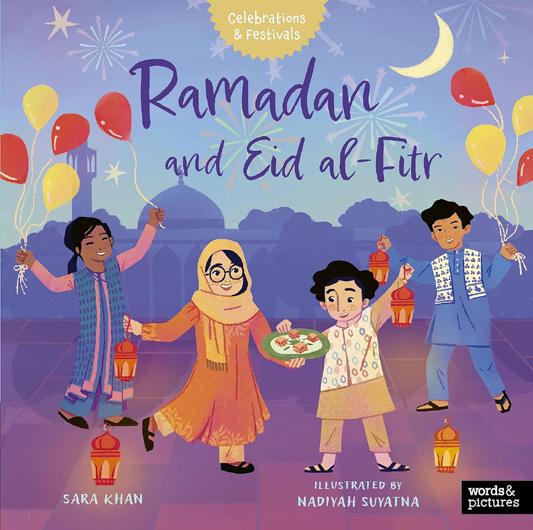
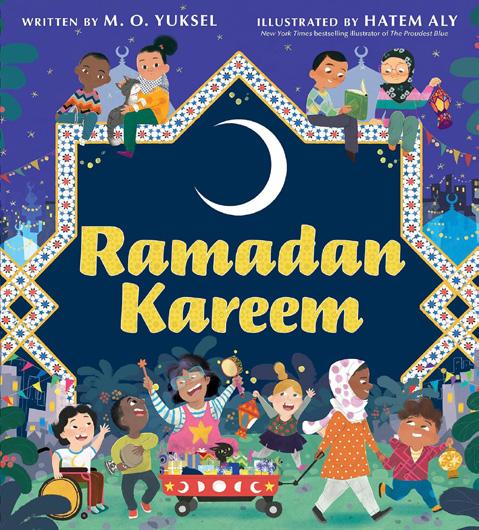 BY M. O. YUKSEL, ILLUSTRATED BY HATEM ALY
BY M. O. YUKSEL, ILLUSTRATED BY HATEM ALY
HarperCollins (February 2024)
Grade Level: K-3
Ramadan Kareem showcases the diversity of Ramadan celebrations around the world. Through a combination of lyrical text and bright, energetic illustrations, readers will gain insight into many of the culturally specific practices that take place during the holy month, such as waking up early for suhoor (the meal eaten before dawn) and waiting to share iftar (the fast-breaking meal) with family at sunset.
BY SARA KHAN, ILLUSTRATED BY NADIYAH SUYATNAwords & pictures (February 2024)
Grade Level: K-2
Young readers can join Raya and her family as they celebrate Ramadan by baking cookies, doing good deeds in their community, playing games, and visiting the mosque. In this book, author Sara Khan draws on her experiences of celebrating Ramadan with her own daughter, also named Raya! Back matter includes fun activities like card-making, along with a quiz to help students learn even more about this important month.

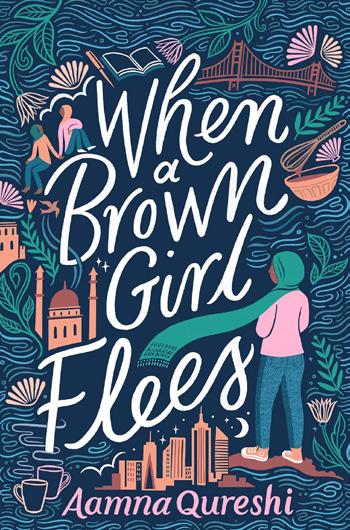 BY MARZIEH A. ALI, ILLUSTRATED BY NAJWA AWATIFF
BY MARZIEH A. ALI, ILLUSTRATED BY NAJWA AWATIFF
Soaring Kite Books (January 2024)
Grade Level: K-3
Zain’s favourite festival, Ramadan, has arrived. However, his family has moved to a new neighbourhood without a mosque or an Islamic school. As readers follow along with Zain, who is determined to find a friend to celebrate the holiday with, they will learn the true essence of Ramadan and the joy of sharing it with others.
AAMNA QURESHITu Books (September 2023)
Grade Level: 8-12
Zahra Paracha, a Muslim teen at odds with her beliefs, runs away from home to New York. Anxious and guilty, she finds solace in visiting a local masjid, where she is welcomed by the loving Muslim community. In this empowering story, Zahra embarks on a journey of spiritual healing, self-love, and hope. But can she create a new home for herself with secrets from her past still haunting her?
5 RAMADAN AND EID AL-FITR 6 RAMADAN KAREEM 7 A RAMADAN TO REMEMBER 8 WHEN A BROWN GIRL FLEES BY 4 THE PARTITION PROJECT BY SAADIA FARUQI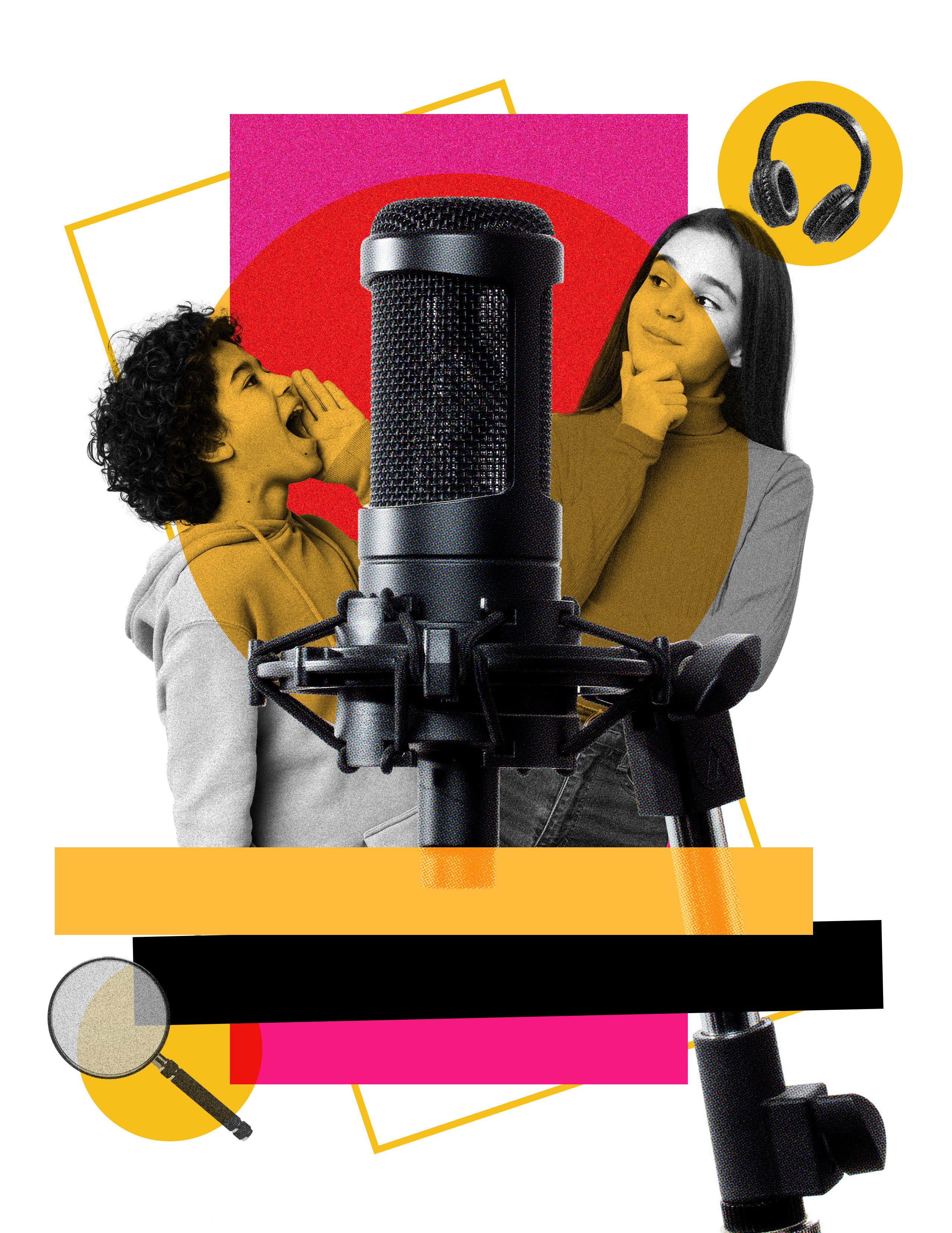
Social studies teachers often feel pulled in numerous directions at once. We want to cover national history and world history. The past and the present. Essay writing and public speaking. But there is a limited amount of time in the school year, and it often feels like we can’t give our students everything they need.
Meanwhile, in the United States, students’ knowledge of both history and civics is at an all-time low. Scores on the National Assessment of Educational Progress (NAEP) showed a steep decline in eighth-graders’ knowledge and comprehension of history and civics. Only 13 percent of students rated as “proficient” in history, while just 22 percent reached proficiency in civics, the lowest percentages in decades.
In my classes at Avenues, a private, non-sectarian school in New York City, I use a team-structured, project-based approach to teach history and civics. It’s an approach that covers nearly all the bases: it requires students to research the past, examine current events, tackle controversial topics, engage in formal writing, and develop their public speaking skills. Best of all, they get to engage in research that is deeply meaningful and relevant to them, which inspires students to pour themselves into their work.
For this project, students are divided into teams of four and must work together to create a website and podcast on a specific theme. Last year’s theme was: “A real, or perceived, threat to liberal democracy.”
The students first choose a specific subtopic related to the theme. I share with them a long list of options to choose from. (Potential subtopics from this past year included election denialism, voter fraud, misinformation, book bans, antiLGBTQ+ discrimination, and “cancel culture.”) I also provide students with an extensive set of requirements for their websites and podcasts.
These requirements are critical to the success of the project. They ensure that the students do substantive—and not merely superficial—work. I have found that setting the bar high gives students a sense of pride when their projects are done. As a coach once said to me, “An easy game is never much fun.” There needs to be a genuine challenge to make any task enjoyable.
To that end, every website is required to have the following:
○ an overview page with background information critical to understanding the topic
○ a timeline of key events related to the topic
○ profiles of key players
○ at least three graphs or charts, as well as an explanatory paragraph for each
○ a selection of 10 articles/websites for further reading (with 3-5 sentence blurbs describing each item)
○ a link to at least one primary source document (with a blurb about it)
○ a section providing cross-cultural comparisons
○ a list of references
○ an “About Us” page
○ a link to the students’ podcast
The podcasts must be “informational and serious.” For their homework, the students listen to an episode of Freakonomics so that they gain a sense of what I mean by this. I don’t want them to simply record a lot of chit-chat. Rather, I want them to create sophisticated, information-rich audio programs that would be interesting and engaging to an adult audience. Each podcast must include:
○ an introduction to the topic
○ a “big question” that the podcast aims to answer
○ a discussion of competing views
○ some clips of interviews with at least three experts on the topic conducted by the students themselves
It’s this last requirement that makes the website and podcast project thrilling for students. I explain that they can interview academics, policymakers, activists, non-profit staff members, politicians, or journalists. Whoever they interview must be credible authorities who are knowledgeable about the topic at hand.
At first, the students are skeptical and a little bit dismayed that I’d expect them mere students to secure interviews
with people they don’t know. “How are we supposed to find experts?” they ask.
“Research your topic and then email prospective interviewees,” I answer.
“But who’s going to talk to us?”
“They’ll talk to you,” I reassure them. “You’ll see.”

Once I give the instructions, students are off and running. With a clear goal in front of them, it’s incredible how selfmotivated they become. Of course, it helps when a topic like “real or perceived threats to liberal democracy” is inherently interesting to most students. They understand that the world is facing a range of crises, and they want to better understand those challenges. Meanwhile, each team wants to create the best website and the best podcast, so there is an element of competition that adds to the excitement.
I should say here that, as a teacher, I don’t think it is my job to tell students what to believe or, in the case of last year’s theme, what to view as a threat to liberal democracy. For that project, I simply specified that the students needed to focus on a “real, or perceived, threat.” Some students believed the restriction of abortion rights to be a real threat to liberal democracy, while others did not. But everyone agreed that it could be perceived as a threat by many, and therefore was a valid topic for research. Same with gun control laws, unbridled speech on the Internet, and judicial limits on government efforts to stop climate change.
Because the projects have so many separate but related components, the students become fully absorbed in them. Nothing feels like busywork and nothing seems trivial. At this point, my role as a teacher is simply to provide guidance when necessary. Often, this means explaining concepts the students don’t understand (though just as often it’s a matter of reminding them that they can search online for answers). Other times, it means pointing them in the direction of trustworthy resources—this includes demonstrating Google Scholar. (As a side note, I have partnered with our library team to ensure that all students have unlimited access to the
New York Times.) I show them how to find contact information for members of staff on non-profit websites and how to parse government documents. Throughout the project period, I also provide feedback on their timelines, their graphs, their document blurbs, and the other sections of their websites. Some students struggle to decide how far back their timelines should go—as far back as ancient Rome or only as far back as one year ago—but that’s part of the learning process. Of course, there are no right answers to such questions, but the students should be able to defend their choices if challenged.
In terms of setting up interviews, it helps to provide students with a sample email. I keep it very simple: “Dear Ms. Jones, we are 10th grade students working on a podcast about ‘x.’ Given your expertise on the topic, we are hoping you might be available for an interview. Would you be willing to talk with us for 20-30 minutes? If so, what dates/times would work for you?” I also share a sample follow-up email if they haven’t heard back in two weeks.
The results that my students produce are consistently impressive and inspiring. I have had some students interview sitting U.S. senators and representatives, journalists based in London and Paris, professors at top research universities, and activists around the world.
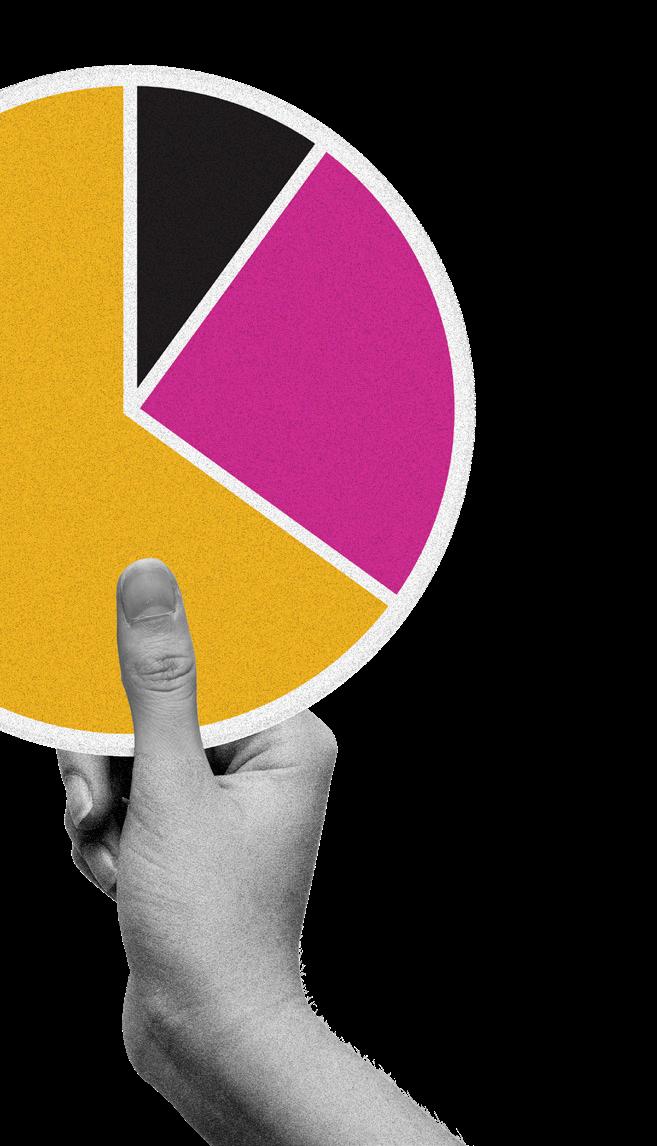
When the projects are completed, the students present their websites in class and listen to each other’s podcasts as homework. This past year there were presentations on the spread of disinformation, attempts to limit the teaching of Black and LGBTQ+ history, efforts to ban abortion, and the use of executive actions by American presidents. It was a deeply rewarding time as the students proudly taught their peers what they had learned, and gleaned from one another valuable lessons about the past, present, and future of liberal democracy.
Project-based teaching takes careful planning and work, but the benefits are innumerable. Students often feel a sense of ownership over their learning, they feel invested in their research and writing, and they feel compelled to do their very best. A project like the one I have described above also erases the problem of academic dishonesty. Who wants to
waste time determining whether an essay was written by a chatbot? When tasked with producing a website and a podcast with a complex set of requirements, there’s simply no way for students to submit work that isn’t their own.
I am very fortunate to work at a school that encourages project-based teaching. Well-designed projects give students the chance to grow and learn in ways they will remember for the rest of their lives. I am constantly inspired by the feedback I have received about this project. Students in previous years have told me that not only do they feel more prepared for the future, having gained more confidence in their research and interview skills, they have also learned more about current events, the government, and how to fight for causes they believe in. My hope is that more and more schools will embrace project-based work and come to see its extraordinary pedagogical value. I can’t recommend it highly enough and my students feel the same way!
DAVID ALLYN, PhD, teaches at Avenues: The World School in New York City. He holds a PhD in History from Harvard University and has taught at Princeton University and Marymount Manhattan College.
Students who have completed the project in previous years have also given the following feedback:
○ “I think this was definitely my favorite project of the year.”
○ “There were many skills that I learned such as how to work with a group, edit an entire podcast, and choose thoughtful questions for interviewees. All of these skills will also help me in the future, thank you!”
○ “This project was very fun and I felt that I learned so much about lobbying.”
○ “Thanks to the cold-call interview requirement, I feel more comfortable doing so. In fact, I even cold-called some of the major park organizations in NYC for a project in another course, and got two responses from Central and Prospect Park. Thank you so much for everything Dr. Allyn!”
○ “I had a lot of fun during this project thank you for assigning.”

Looking for a fun indoor activity to help your students burn off some energy during the colder months? Well, look no further than a local gymnastics club! Gymnastics have been shown to offer many benefits for kids, including increased flexibility and coordination, improved bone density, and better confidence, while also stimulating cognitive growth by working both sides of the brain. Participating in gymnastics can even help kids gain social skills such as listening, following directions, and taking turns. To that end, we’ve gathered a list of several gymnastics clubs across Canada and the United States that are definitely worth checking out.
Brampton, ON
All Star provides a safe, positive, and healthy learning environment for kids in Grades K-8. Younger students will learn basic gymnastics movements and safety rules, while focusing on listening skills and following instructions, all to the tune of fun and boisterous music. Older students will play games and be taught some gymnastics positions, centred around themes of balance, locomotion, landings, and more. Book a trip today through the website: www.allstarsportscentre.com
Various locations, TX
ASI has been offering quality gymnastics to children in Texas for over 30 years. During each 90-minute trip, students can try their hands at the rope swing, trampoline, and foam pit. Staff members will also lead them through exciting games designed to keep the kids active and moving for the duration of the trip, and best of all, the students will have a bit of open playtime before they go. Find more details and different locations here: www.asigymnastics.com
Coquitlam, BC
Club Aviva and School District 43 have paired together to build a gymnastics curriculum designed to target the physical education needs of students. These high-energy field trips focus on improving students’ fine motor skills through instructional gymnastics lessons, and also include a warm-up and stretch. Club Aviva hosts class parties and celebrations as well, where students can play games, participate in relays, and have some free time in the facility. Learn more about each type of field trip at: www.clubaviva.ca
Beaverton, OR
At Omega Gymnastics, students will have access to the gym’s 40-foot tumble track and Olympic-sized trampoline, as well as all plenty of other equipment. Each trip begins with a warm-up and safety instruction, followed by rotations through the equipment, then ending with games and free time. For more details, visit Omega’s website: www.omega-gymnastics.com
Grande Pointe, MB
Students can jump, swing, and tumble to their hearts’ content at Prairie Reign Gymnastics. This gym runs one- and two-hour field trips on various days throughout the year. During the trip, students will learn movement patterns and safe trampolining techniques. The instructors will incorporate history and science into each session as well! Learn more and contact the gymnastics club for additional details here: www.prairiereigngymnastics.ca
Various locations, WA
SGA field trips are designed for students in Grades 1-6. Each trip lasts for one hour, where coaches lead the group through a series of obstacle courses and teambuilding activities. Students will also get plenty of time in the foam pit. Field trips are currently offered at SGA’s Lake City and Burien locations. For more details, visit: www.seattlegymnastics.com
Edmonton, AB
South Edmonton Gymnastique runs two-hour field trips that can be delivered in both English and French. The sessions start with an energetic warm-up/stretch, then students are lead through the gym’s three centres: gymnastics, tumbling and trampoline, and ninja! These trips align with the Alberta Curriculum and can also be geared towards students with cognitive or physical disabilities. Book a session today at: www.segymnastique.ca
Governance. Democracy. Citizenship.
Stop for a moment and try to explain these ideas in plain language. It’s hard to do. You might find yourself stumbling over words like “Parliament,” “elected representatives,” “constituency,” “bill,” “amendment,” “committee” and “caucus.”
Every year, teachers all over Canada must make complex ideas about democratic governance understandable and relatable to students at all grade levels. Knowing the challenges this can present, the Parliament of Canada offers educational resources and professional development opportunities to support teaching civic literacy in K-12 classrooms.
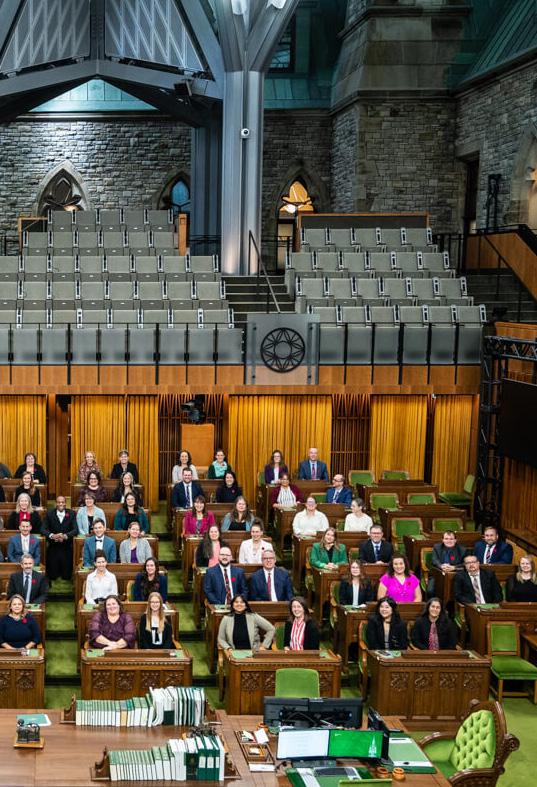
Parliament: The Classroom Experience is a new travelling classroom program, which takes students into the heart of democracy in virtual reality (VR). Using the provided equipment, learners go on an immersive journey inside Centre Block – the historical seat of Parliament, which is now closed for longterm rehabilitation. VR Classroom Kits can be booked for a one-week period, free of charge, and include all the equipment needed to run the experience – no internet connection or other devices required.

Educators hoping to deepen their understanding of Canadian civics can also apply to the Teachers Institute on Canadian Parliamentary Democracy. This once-in-a-lifetime, week-long professional development opportunity allows teachers to engage directly with parliamentarians, exchange best practices with peers, and return to the classroom with renewed energy.
Educators who attend the Teachers Institute:
meet parliamentarians, officials and experts who share valuable insights into the inner workings of Canadian governance;
learn through hands-on experience how to run parliamentary simulations, such as debates, question period and committee meetings; and
receive free educational resources from the Parliament of Canada and partner organizations, such as the Office of the Governor General of Canada, the Supreme Court of Canada and Elections Canada.
Applications for the 25th edition of the Teachers Institute on Canadian Parliamentary Democracy are now open. New and experienced teachers are encouraged to apply, regardless of their core subjects.
The program aims to bring together a diverse group of 85 educators from all provinces and territories to create a balanced mix of Canadian perspectives. Interested educators can find the program requirements, application, and dates on the Teachers Institute on Canadian Parliamentary Democracy web page


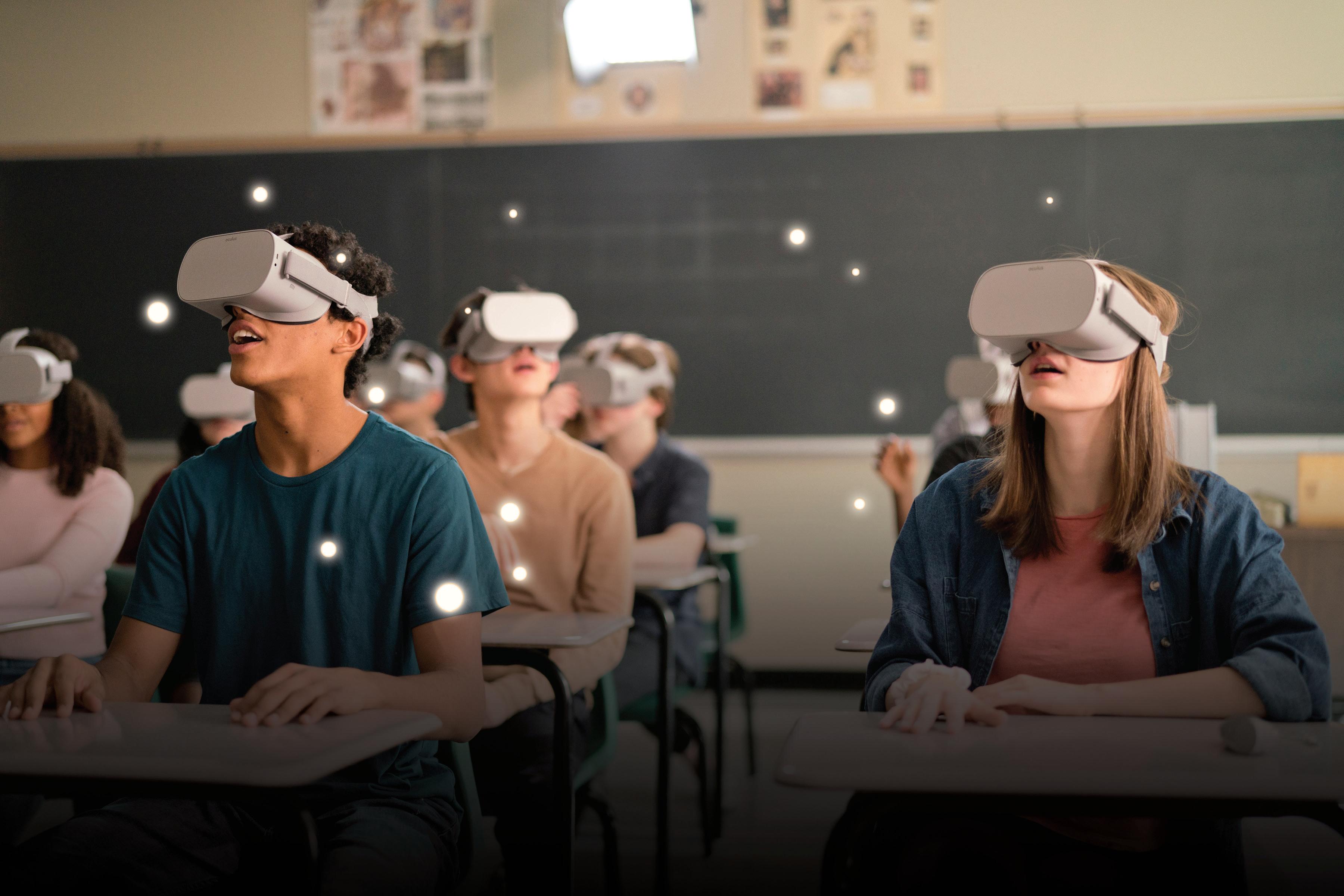
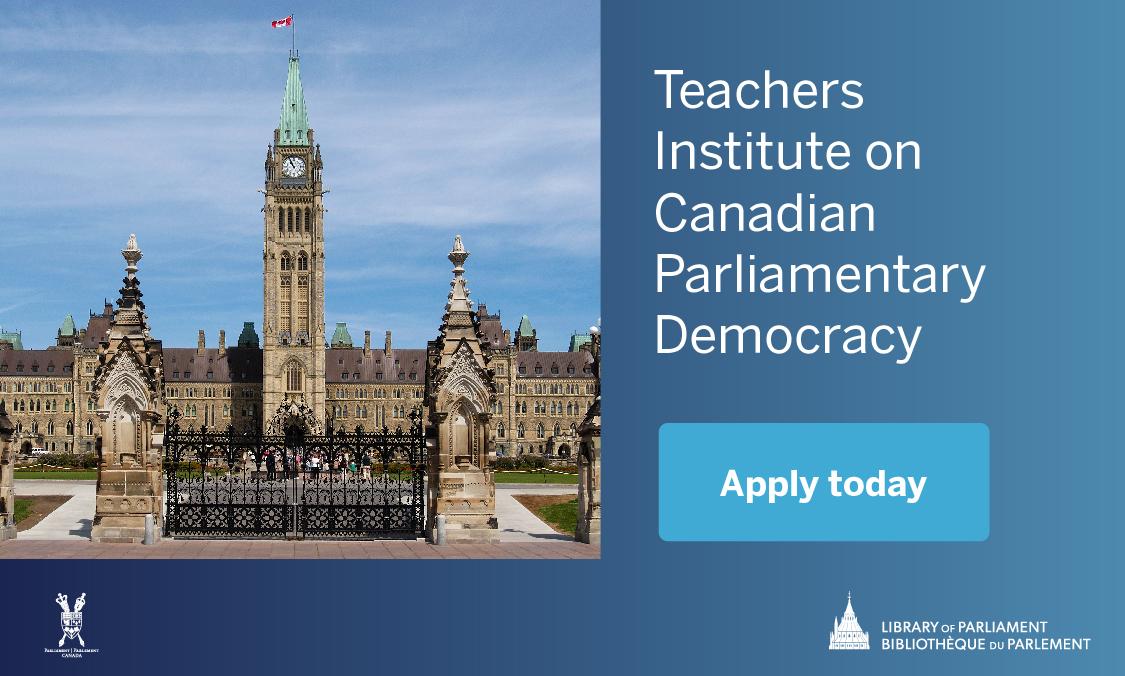
 BY FIONA TAPP
BY FIONA TAPP
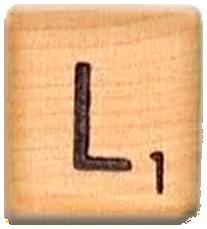
iterary and educational communities are grappling with the challenge of recent book bans across the United States. In 2022 alone there were 137 gag order bills introduced in 36 state legislatures that sought to limit what materials could be taught or made available in public schools and libraries. Like so many American trends, this one is unfortunately migrating up to Canada too, with recent stories such as a ban on books containing LGBTQ+ themes by the Waterloo Catholic District School Board.
John Chrastka, executive director of EveryLibrary (a national political action committee dedicated to libraries), says that the current moves toward censorship highlight a dark legacy. “Limiting access to information, curtailing exposure to ideas, and diminishing opportunities to discover have never been best practices in education—or in civil society,” he notes. “The political regimes that practice censorship find themselves on the wrong side of history.”
Kenneth Kunz, past president and current active board member of the International Literacy Association, says that attempts to remove certain books from schools prevent children from learning essential skills. “We are a globally connected community with diverse cultures, experiences, and worldviews,” he explains. “Being able to respectfully, collaboratively, and empathetically participate in such communities requires background knowledge, as well as an ability to tolerate the discomfort of different ideas or difficult history.”
Amidst these rising concerns, how can educators ensure that their students have access to a rich tapestry of stories that reflect the diversity of the world around them? Book clubs emerge as a beacon of hope, offering a platform for open dialogue, critical thinking, and the celebration of varied perspectives, along with the chance to become part of a community of book lovers.
Educators also recognize the potential of book clubs to serve as catalysts for social change. From book clubs tailored for BIPOC (Black, Indigenous, and People of Colour) students to those championing the voices of young girls, these literary gatherings go beyond the conventional, opening doors to narratives that resonate with the unique experiences of each participant. By curating reading lists that spotlight diverse authors and characters, book clubs become a force for promoting understanding, empathy, and a sense of belonging.
Tanya Marie Lee is leading the charge with her book club (and soon-to-be-launched podcast) A Room of Your Own, which caters to high-risk teen girls who may not be able to afford to buy their own books.
Lee holds monthly book club meetings with authors in attendance to answer questions and lead discussions. Meeting the author is an integral part of Lee’s book club. As she says, “Having the author present is always part of the mandate. The students are going to meet the author, get a sense of who the author is, and have fun, talk, and ask all sorts of crazy questions.”
The experience is reciprocal, Lee explains: “The authors love it too because they get the feedback from their intended audiences. The answers that these young women come up with, they’re just sheer brilliance. They have blown the authors away.”

At the book club’s first meeting almost seven years ago, a group of girls between the ages of 13 and 18 met the author Kelley Armstrong and discussed her YA thriller The Masked Truth. The young adult action thriller novel dealt with issues around mental health, which would become an important touchstone for future club meetings.
Those first book club attendees are adults now, and at a recent reunion Lee was delighted to find that reading remains a passion for them. “They’re all grown now and they’re still reading!” she exclaims. “It was really nice to hear how reading impacted their lives and how they still love reading.”
Beyond nurturing an appreciation for literature, Lee’s book club is creating something intangible and priceless; a safe space these girls can call their own. “Young women are taught to shrivel up and close up as much as possible,” Lee says. She explains how she instructs students before a meeting to take a deep breath and expand, claiming their space. “This is where you learn how to do it in a girl-positive space,” she says, “and if you can learn how to do it here in a safe environment, then you’ll learn to keep that knowledge and that feeling and take it to other environments. So, I always say: claim your space.”
This opportunity for vulnerability within a caring environment is vital for young people, but can mean that teens reveal sensitive information or disclose concerns about their mental health. That’s why, along with the visiting authors, Lee invites mental health care professionals to attend as well, to share advice and give information about local support services.
“The book club always addresses mental health and we do it through reading,” she says. The act of reading is self-care and can positively impact mental well-being. As Lee explains, “Literacy is a determinant of health. If you’ve had a really, really bad, tough day, the best thing possible would just be to pick up a book and start reading for at least 20 minutes and your stress levels will go down.”
Signing up is the first step, but to get the most out of book clubs, students need to fully participate. This means not just reading the book, but being

confident enough to share with the group and talk about their thoughts and feelings.
Lee helps young women to grow in confidence and feel comfortable, while keeping in mind that none of us read in a vacuum and that books may affect different people in different ways. “When we read a book, we bring our lived experiences into that novel,” she notes. “We see it through our lived experiences.”
Lee herself is a bibliophile and gets just as excited as the young women in her book club when a particularly good novel comes her way. The group has recently read Crave by Tracy Wolff, and Lee’s enthusiasm for the book and the character of Jaxon Vega is compelling. “It just brought me back to a special moment in time when I was a teenager and reading Judy Blume’s Forever,” she says.
On top of that, her energy and enthusiasm for building a girl-positive community is remarkable. It’s easy to see why young women would consider her an inspirational role model for learning and reading.
Any school across Canada can join the Room of Your Own book club virtually and soon, interviews with the authors will be available on a special A Room of Your Own podcast on Spotify.
As anyone working in education knows, successful learning initiatives are a team effort and Lee is quick to honour the teachers that she has collaborated with from the Toronto District School Board (TDSB). “The book club teachers from the TDSB take time out [to] meet with the students and nurture them in their reading,” she says. “These are exceptional teachers and they really get to learn more about their students through the book club.”
In the face of challenges to literary freedom, book clubs stand as champions of the transformative power of storytelling.
By delving into narratives that challenge preconceptions, question societal norms, and celebrate individual identities, educators can empower students to think critically and compassionately. The discussions sparked within book club settings often transcend the pages, shaping young minds and fostering a generation of readers who are not only empathetic but also equipped to navigate a complex world.
From confronting censorship challenges to championing representation, book clubs can open worlds of knowledge. Check out these resources to find or create a book club for your students:
E Teachers can learn more about A Room of Your Own from Tanya Marie Lee at aroomofyourownbookclub@gmail.com or through its Facebook page.
E The Love of Literature Book Club is Canada’s only nonprofit book club for Black youth ages 7-18.
E Apply for a grant from the Book Love Foundation to expand your classroom library. Grants of $1,000 are available for full-time preK-12 classroom teachers in Canada or the United States.
E Visit your local library to see if they offer Book Club Kits. These come with multiple copies of the same title and sometimes include starter questions and discussion topics.
E Consider joining an educator’s book club to discuss the latest pedagogical research with other teachers, like those available at the BCcampus Online Book Club or through the Ontario Principals’ Council

FIONA TAPP is a former teacher and school administrator of 13 years. She writes about education, parenting, and travel for a variety of publications including National Geographic, the Globe and Mail, the Toronto Star, the Sunday Times, and many more.
If you’d like your furry or feathered friend to be featured, visit our website and check the submission guidelines.

Bear | 4y | Belgian Malinois Mix
Location: Pennsylvania, USA
Parent: Chrissy R.
Dramatic, Huggable, Smart

Location: British Columbia, Canada
Parent: Nicola G.
Energetic, Protective, Snuggly

Bonk | 2y | Cardigan Welsh Corgi
Location: British Columbia, Canada
Parent: Lucy Y.
Brazen, Earnest, Robust

Obi Wan Catnobi | 6y | American Shorthair
Location: Louisiana, USA
Parent: Chelsea C.
Apprehensive, Doting, Self-Sufficient
Lucy | 3y | Anatolian Shepherd/ Maremma Sheepdog/Poodle Mix
GRADE LEVEL: PRIMARY (K-3)
THEME:

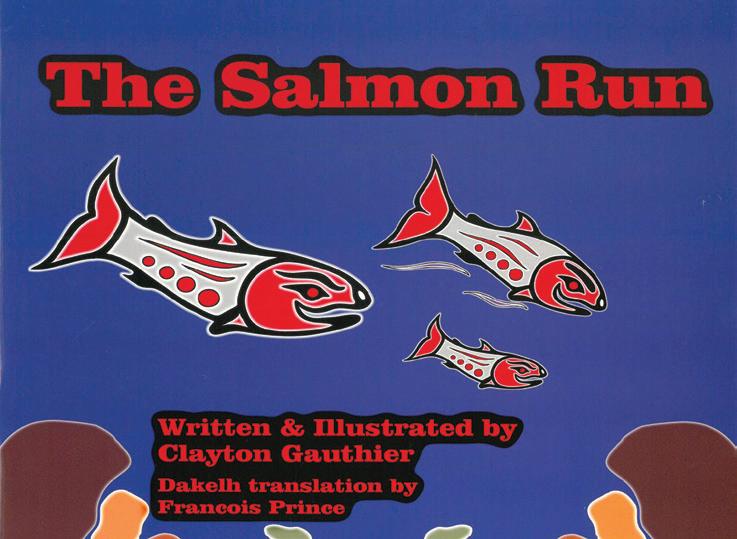

Students will connect to the understanding that courage has many faces and is reflected in nature as nature is reflected in ourselves. The First Peoples Principles of Learning grounds this understanding while acknowledging that pedagogy is both dynamic and culturally specific.
• “Learning is holistic, reflexive, reflective, experimental and relational (focused on connectedness, on reciprocal relationships, and a sense of place).”
• “Learning requires exploration of one’s identity.”
• “Learning is embedded in memory, history, and story.”
• “Learning involves generational roles and responsibilities.”
Open a conversation with students as to what courage looks like in their world. Allow for all answers with probing questions. Does courage look the same for all of us?
The Salmon Run by Clayton Gauthier, Dakelh translation by Francois Prince (Theytus Books, 2016)Read the book The Thing Lou Couldn’t Do by Ashley Spires. Have students connect to how they have developed their personal strengths and abilities. Who supported them and why did they need to develop this courage? Who was relying on them to have this courage? Chart the responses or have the students reflect and add to understandings with their own drawings and pictures. This open-ended provocation requires time and active participation to support the big ideas of the lesson. There can be great personal connection in this activity and even humour. This may be the first time the student has operationalized a definition of a word and may require support and modelling.
Title of Lesson: Courage is a Lifelong Journey
The Salmon Run by Clayton Gauthier is 12 phrases long and provides an opportunity to build understanding, connection, and identity with thoughtprovoking strategies. The story has been translated into Dakelh.
Before:
Discuss how courage can be found in nature, how we can see ourselves in nature, and how the actions of every living thing can have consequences to other living things. “We are one with all things,” says Clayton Gauthier.
Say to students: “Here is a really hard question. I want you to place your hand on your heart when you know your answer. Think of an animal that has to have great courage every day. As Clayton Gauthier, the author of the book we are about to read asks, ‘How do we hold and walk with courage like the animals?’”
Let students discuss in groups of three, encouraging them to share their reasoning. Have them discuss the following questions as well:
• When you think of salmon do you think of courage?
• When you eat salmon do you think it was thinking of you?
First Read:
While reading The Salmon Run, pause and give students some time to think before reading the next page. Do not point out the artwork or discuss what is happening. Let the students experience the story at their own level of understanding.
Second Read:
Read the second paragraph of the introduction by Clayton Gauthier: “The salmon’s journey came to light and I pictured the artwork in my mind before the vision came to life. In this book I wanted everyone to see and feel the salmon journey and to have a better understanding and respect for salmon as they bless us and feed us every year to live a long and healthy life.”
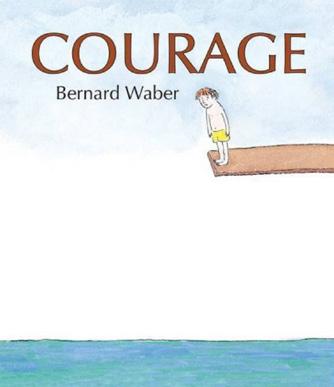

Courage by Bernard Waber (Houghton Mifflin Company, 2002)
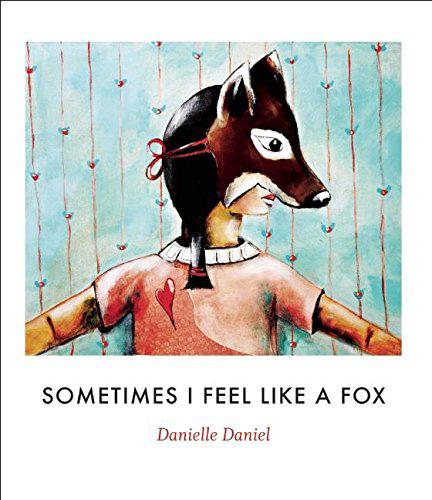
Sometimes I Feel Like a Fox by Danielle Daniel (Groundwood Books, 2017)
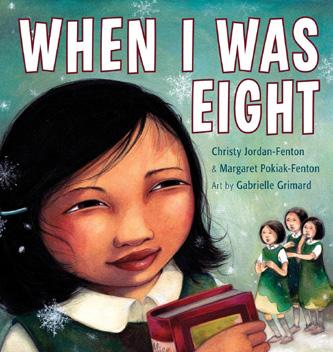
When I Was Eight by Christy Jordan-Fenton and Margaret PokiakFenton, illustrated by Gabrielle Grimard (Annick Press, 2013)
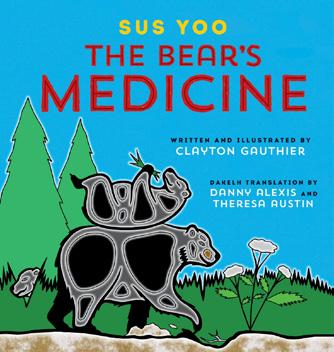
Sus Yoo / The Bear’s Medicine by Clayton Gauthier, Dakelh translation by Danny Alexis and Theresa Austin (Theytus Books, 2019)

When We Were Alone by David A. Robertson, illustrated by Julie Flett (HighWater Press, 2016)
 Lila and the Crow by Gabrielle Grimard (Annick Press, 2016)
A Dance Through the Seasons by Leona Prince, illustrated by Carla Joseph (Fireweed Canada, 2019)
Lila and the Crow by Gabrielle Grimard (Annick Press, 2016)
A Dance Through the Seasons by Leona Prince, illustrated by Carla Joseph (Fireweed Canada, 2019)

Share with the students that this story belongs to the salmon and Clayton Gauthier is telling the story from the salmon’s perspective. Remember that Clayton Gauthier had the pictures in his mind before he had the words to describe the salmon’s story. Why might this be?
As you read the story stress words that describe nature and make the students feel “the warmth of the sun,” the energy it takes to swim through the barriers, the support of where “the water speaks,” the encouragement from “feeling the rapids of the sacred water,” and the relief of knowing “the moon tells us we are almost home.”
Stress the words that relate to self, family, and community like “helping my sockeye brothers and sisters,” “following my ancestors,” “our true color comes out from within,” and “work hard for our children.”
Third Read:
Do you think salmon have courage? Discuss in groups of three.
Say to students, “This time when you listen to the story, I want you to visualize that you are the salmon telling the story. When you feel the warmth of the sun how might you show it? In your own way without saying a word, tell the story as I read it. How will you show when you are being courageous?”
Read the phrases to allow time for thinking, reflecting, and responding. Like the salmon in the story, the students are on a journey.
Fourth Read:
As you read the story again, say to students: “We have connected to the author, the salmon, and each other. As we read it again let’s look carefully at the pictures and see the story that Clayton Gauthier saw before he had the words. When you see the story in the illustration, place your hand on your heart. This will be different for every one of us and even different every time we read The Salmon Run. As Clayton Gauthier says, ‘We all see and feel the world with our own hearts and minds, no one’s heart and mind are better or smarter... we all have lessons and blessings to bring to this world.’”
Create a quilt of the salmon’s journey in honour of its courage. This activity will also honour Clayton Gauthier’s journey of creating this story. On a piece of paper the approximate size of the book, with only red, brown, black, gray, and blue, the students will illustrate from the point of view of the salmon the courage it took to return home.
The display will be a collage of illustrations representing connection, truth, understanding, and personal connections to the themes of this lesson.
In the oral Dakelh tradition of storytelling, the students will share their piece of the quilt connecting nature, humans, and story.
The strategies built into this lesson support assessment as learning. The sharing with peers and personal connections shown through body and facial expression support
just-in-time understanding and connection to text. The illustrations and sharing of their “story” allow for probing questions and the opportunity to learn from others while growing communication skills.
• K - 3 Indigenous Literature for Classroom Use (Empowering the Spirit)
• 10 Beautiful Indigenous Children’s Books To Add To Your Library (CBC Parents)
• 20 Canadian books for kids and teens to read for National Indigenous History Month (CBC)
The strategies and progressions in The Salmon Run can also be applied to Sometimes I Feel Like a Fox by Danielle Daniel.
This lesson approach can easily be adapted to: Positive Personal and Cultural Identity, Social Awareness, and Responsibility
• Exchanging the theme of courage for the themes of gratefulness, well-being, recognizing personal values, cultural context, and valuing diversity can be applied to Sus Yoo / The Bear’s Medicine.
• A natural progression of discussing the themes of courage, gratefulness, wellbeing, recognizing personal values, cultural context, and valuing diversity can be applied to A Dance Through the Seasons.
Additional areas for learning:
• Identifying personal strengths and abilities
• The interconnection between living and non-living things in the local environment
• Caring for the environment
• Stories connect us to ourselves, families, and communities
• Local actions have global consequences
• Stories can be understood from different perspectives
• Traditional and contemporary Indigenous artists connect our experiences to the experiences of nature and others














Ever since I was four years old, I dreamed of becoming a teacher. I would come home from kindergarten and “play school” with my stuffed animals and siblings. Whenever someone asked me what I wanted to be when I grew up, I knew the answer deep in my heart: a teacher!

However, I never really saw any teachers who shared aspects of my identities (Muslim and South Asian)—neither in real life, nor in the books I read. In many ways, even though I did not have the language to verbalize or make sense of this at the time, I internalized that people like me did not belong in this profession.
I didn’t let the lack of representation hold me back from achieving my dream though. I persevered, and today am a proud educator! I love my job, and couldn’t be happier with the work that I get to do, but it hasn’t always been easy.
When people see me, they are often unable to reconcile my “teacher body”—which is based on my identities—with that of the typical “model” teacher that is usually reinforced by popular tropes and discourses in society. This dissonance is especially obvious when I am asked any of the following questions:
“Are you the lunchroom supervisor?”
“Can I speak to the teacher?”
“Are you here to supply?”
“Are you a volunteer?”
“Can I see your name tag and ID please?”
“Where is the teacher in this classroom?”
Not only are these comments hurtful, they serve as a reminder that the physical representations of my identities do not fit those of the idealized teacher. Even when I am dressed professionally (in the same manner as any other teacher) or am the only adult in a classroom space, there will probably be some people who think that teachers do not look like me.
This of course begs the question: What should a teacher look like?
Going through these experiences has been a heavy burden to bear, and never seeing reflections of myself in the spaces I’ve wanted so much to be included within has often felt isolating.
Fortunately, attitudes are changing. Last summer when I was shopping for some back-to-school books, I came across School Day!, written by Candice Ransom and illustrated by Ashley Evans. As I was


flipping through the pages, I was so surprised to see that the teacher in the story was a Muslim woman wearing a hijab—just like me! It was the first time I had ever seen a character that I strongly identified with in a book. Finding someone who looked like me was a form of healing. I felt seen, validated, and empowered.
This small moment was so meaningful to me, even as an adult; I can only imagine how a child may feel seeing the same. It is especially important for young people to see themselves reflected in various roles in society, so they know that they too can strive to be in such spaces. But it is also important for children of other identities to see these representations—this is one of the ways to build respectful and inclusive communities, which is something that I am strongly committed to as a teacher.
I believe that the classroom is one of the most powerful spaces to affect positive change. Often this starts by selecting materials that represent all of our students. Books are a great way to introduce students to a multitude of cultures and identities, while simultaneously deconstructing stereotypes. They show us the way forward and encourage us to do things we felt like we couldn’t do before. Books provide paths to make the impossible feel possible.
One great example is Vashti Harrsion’s book Big. It tells the story of a little girl with a big heart and big dreams who is boxed in and not given opportunities because her body is seen as being “too big.” People try to give her advice by telling her to act small, blend into the background, and change so that she can fit in. But even though her experiences are challenging and the comments often hurtful, she decides to “make more space for herself.” I think that books like Big can help all of us feel less alone as we journey to make space for ourselves in areas we never thought we could belong.
Another good book about representation that I’ve recently come across is Parker Looks Up: An Extraordinary Moment, written by Parker and Jessica Curry. Based on their reallife visit to the National Portrait Gallery, the book tells the story of how four-year-old Parker saw a painting of former U.S. First Lady Michelle Obama and immediately became transfixed. This moment was so powerful because she “saw more than a portrait—she saw a road before her with endless possibilities.”



I was so excited when I found School Day! that I hugged the book and immediately asked my sister to take a picture.


I have often had to carve out my own place within the education sector, which means that I may be the only one who looks like me in certain spaces. This can create a lot of pressure, but I think that sometimes we have to strive to be the representation we needed as young people.
I recently had an opportunity to do so when I was approached by the amazing authors Colleen Nelson and Kathie MacIsaac. They asked me to be one of the people featured in their book If You Can Dream It, You Can Do It. It showcases people of all identities and lived experiences in various careers. I was the teacher.
This was an incredibly powerful choice because it intentionally shifts and counters the traditional narratives around what a teacher is supposed to look like or who is supposed to be in this role. The book celebrates my identities and validates my dreams and goals. With it, I can confidently say, “A teacher can and does look like me!”



Through my experience working in several school communities in a variety of teaching roles, I have also met many students whose beautiful statements warmed my heart.
“I like your hijab, my mom wears one too.”
“You look like my neighbour.”
“I like learning from you!”
“I want to be a teacher like you when I grow up.”
“I am Muslim like you!”
Their comments remind me that everyone benefits from seeing representations of themselves and others in both real life and in books. I hope that by continuing my work as a teacher, I can encourage young people to keep believing in their dreams and show them that they belong in all of the spaces they want to be in.


RABIA KHOKHAR is an elementary teacher, PhD student, and Teacher-Educator in Toronto. She is passionate about social justice education and representation in children’s literature.











